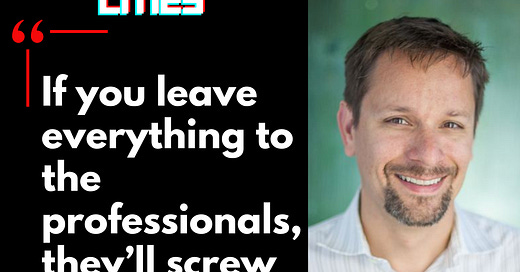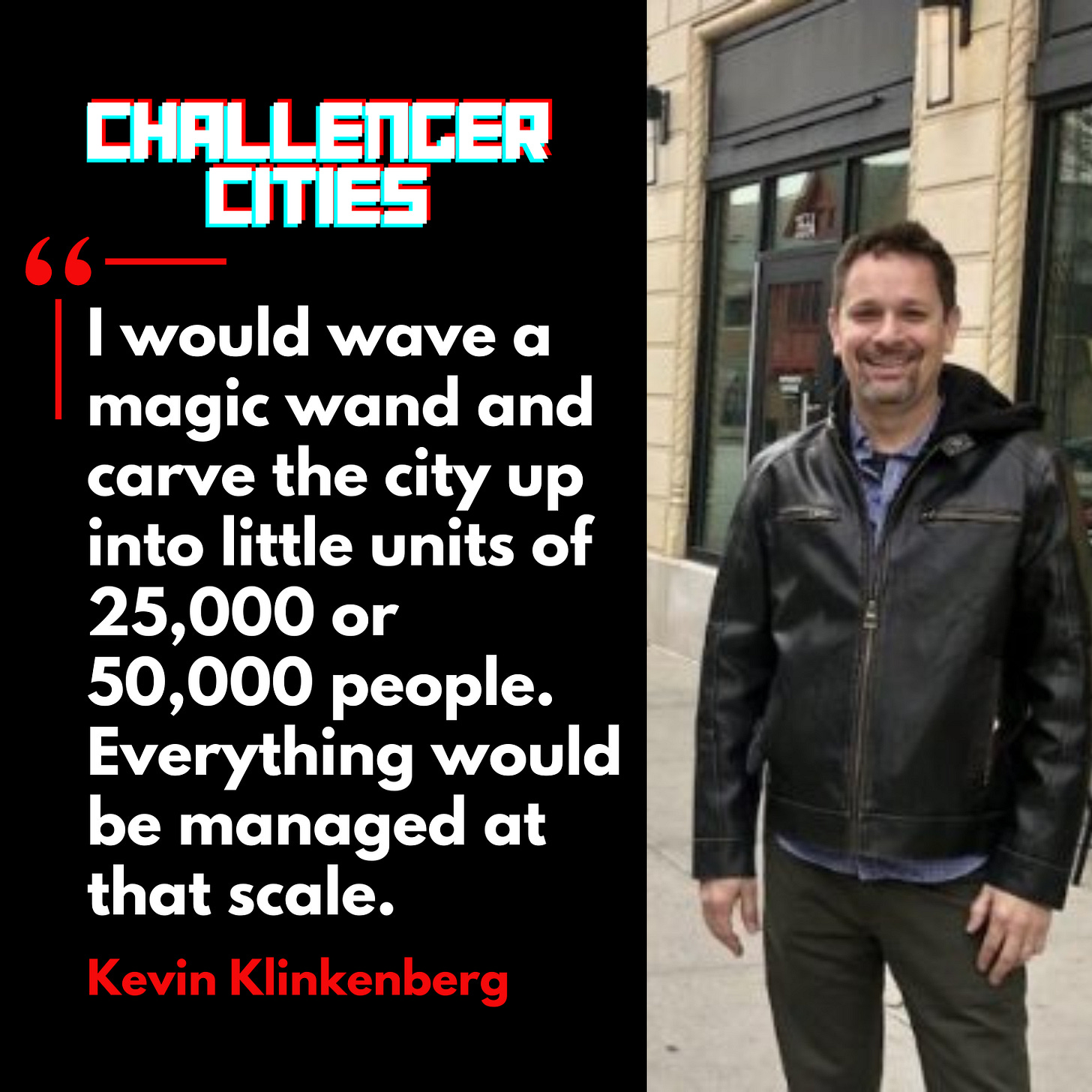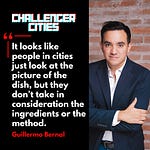Every city tells itself a story, and lots of them in the US have something that goes like this … everything’s working just fine, there’s parking when you want it, space to drive and a certain Midwestern manageability that suggests you don’t need to mess with the formula. But scratch the surface, or take a walk anywhere that isn’t newly polished (fi they have proper sidewalks), and a different picture can emerge. One of unrealised opportunities, big roads, empty sidewalks and past realities of neighbourhoods that once teemed with life now running at a third of their former energy.
Kevin Klinkenberg has spent enough time in the guts of Kansas City to know both versions of the story, and while he’s got the CV of a typical urbanist, architecture school, master planning experience, public sector credentials etc., he’s refreshingly uninterested in playing the usual role. Kevin isn’t here to pitch you on some utopian scheme, but to make a block work better. And then maybe another. And another. Not because it’ll win awards (though it might!), but because people live there and deserve better.
“We need more people living here. We need more people who have disposable income. If you want to have those cool local shops and businesses to go to, if you want to have the better bus service, better public services; we’ve just got to have more people.”
From Grand Visions to Tricycles in the Street
Kevin’s story isn’t unusual for anyone who’s tried to get things done in a city. He started out in design, ended up in place management and along the way realised that most plans never survive contact with reality. “I’ve done a lot of master plans,” he admits. “And I think people love big visions. They’re attracted to them. But you can’t get too hung up on that.”
In Kansas City, that meant starting with a small park and a modest grant. Nothing super flashy and transformative, but it proved something could be done. Soon, there were bump-outs to shorten crossings, new landscaping and better pedestrian paths. And from that emerged The Arterie an art walk linking some of the city’s most beloved institutions. Not because a master plan told them to, but because a group of locals decided to try.
“We picked a three-block stretch. We were able to finally get all the institutions at the table together, working together—which they had never really done in any tangible way. And each month we have basically a new person who comes on board who wants to help join the effort and extend it.”
The Trouble with Perfection
Ask Kevin what’s wrong with city planning and he doesn’t start with politics or policy. He starts with mindset. “There’s a lot of planner jargon I really try to avoid,” he says. “‘Density’ is a word I try to avoid, because it’s just math. It doesn’t give you any idea of quality … It doesn’t mean anything for people’s day-to-day experience.”
Kevin has fully embraced the idea that mess is not just inevitable, it’s where the real energy comes from, what makes cities worth living in. It’s often what saves them, makes them special, gives people energy and attracts more of them. He points to Weston, Missouri, as a small town that lost its riverfront location and fell into decades of decline. “Weston became so poor that they didn’t have the money to tear down their buildings,” he says. “The main street of Weston is like two blocks long. And it is, you know, it's a funky collection of buildings that you would never probably design on purpose as a set piece. And, you know, some of them are really banal, but yet the whole thing works…”
Charm often isn’t created from scratch, but taking care of something that might have been left alone.
The Anti-Hero’s Guide to Fixing a City
Kevin doesn’t see himself as a civic saviour that knows it all. He’s really more like a neighbour who knows a few tricks and isn’t afraid to get his hands dirty. In fact, the real heroes in his version of city making aren’t architects or planners at all. They’re regular people who plant trees on their block, or shove a tricycle into the road to slow speeding cars or gather a few neighbours to fix something that is taking too long to get done from the top down.
This line really resonated … “If you leave everything to the professionals, they’ll screw up your city.”
He doesn’t romanticise it either, for its very hard. He knows showing up to a public meeting often means carefully handling some of the very loudest in the room. But that doesn’t mean you're powerless, just need need to create some momentum. “Once you solve a small problem, you’ll get more interested in solving bigger problems too,” Kevin says.
In that spirit, he even acknowledges the logic behind those slightly controversial citizen interventions.
“Years ago, I used to live on a one-way street where people would drive way too fast all the time just because it was one way. And I had some neighbours who simply took a little kid's tricycle and put it out in the middle of the road like every so often. It was remarkable how just like doing that one thing, you could sit out there and the speed of traffic was so much different. I mean, it was incredible because people, not just the thing that was in the road, but people had an instinct of like, there might be kids here. I better slow down.”
Rethinking the Suburbs, Too
Kevin’s not here to pit downtown against the suburbs for he’s too pragmatic for that. “There’s obviously a huge market of people who really enjoy living in sort of a standard, like American suburb. And that’s fine… Most of my family does. And they love it.” he says. “There are also people who complain about things that they wish were better… A lot of it has to do with traffic. A lot of it has to do with alternate ways of getting around… A lot of it has to do with maybe ugliness of shopping areas and strip malls.”
He sees potential in the least likely places like stroads, intersections, strip malls and those odd spaces between. It takes us on to touch upon the idea of roundabouts, as a more European phenomenon, as opposed to the North American 4 way stop junction. “It’s a very technical sort of thing, but they can change the game in suburban areas,” Kevin says. “Most of the cause of traffic backups is intersections… and roundabouts allow traffic to flow more efficiently. That can free up space for bike trails, or even help transform those ugly commercial zones.”
He also believes in gentle infill, the likes of granny flats, backyard cottages and accessory dwellings that give families more flexibility as they age. “My sister and her husband gave up their master bedroom so my parents could move in on the main floor,” he says. “They were happy to do it. But if they’d had a little cottage on the back lawn? That would’ve been a much more dignified way to do it.”
Shrink the System, Not the Ambition
Toward the end of our conversation, I asked Kevin the usual closing question about what he’d do with a magic wand. His answer is perhaps a bit less sexy, so it wasn’t a new transit line or big top down visualisation, it was governance.
“I would wave a magic wand and carve the city up into little units of 25,000 people, 50,000 people, something like that. And everything would be managed at that scale… there’s such an impersonal nature to size and scale that is not always good. And I think that causes a lot of our problems, a lot of our issues.”
It might not grab the big headlines, but it makes a lot of sense, perhaps because a version of that is in my world in Montreal just now with borough mayors, as well as a city one. More connection local accountability and room to try something small and see if it works. Then other places can see if they want to learn from it, and apply it in their own local context. It effectively creates a few different skunkworks environments which means more can be tested, scaled or walked back as required.
Challenger Cities Start With People Who Do Stuff
At the core of Kevin’s work is something refreshingly unsexy, really impactful and encouragingly, super doable! Cities don’t get better because of big top down visions and masterplaces that look incredible on a screen … though such ambitions and imaginations do help. They also get better because someone took initiative, got away with something, applied it imperfectly … which could be some paint on the street, some plants, some neighbours banding together, planting trees, arranging an event etc.
There’s something really captivating in the person that’s not calling for a revolution, and just doing the next thing, which to me is what makes people like Kevin worth listening to.
So as Kevin says, “Pick the thing that annoys you and fix that.”
To being Challengers.

















Share this post